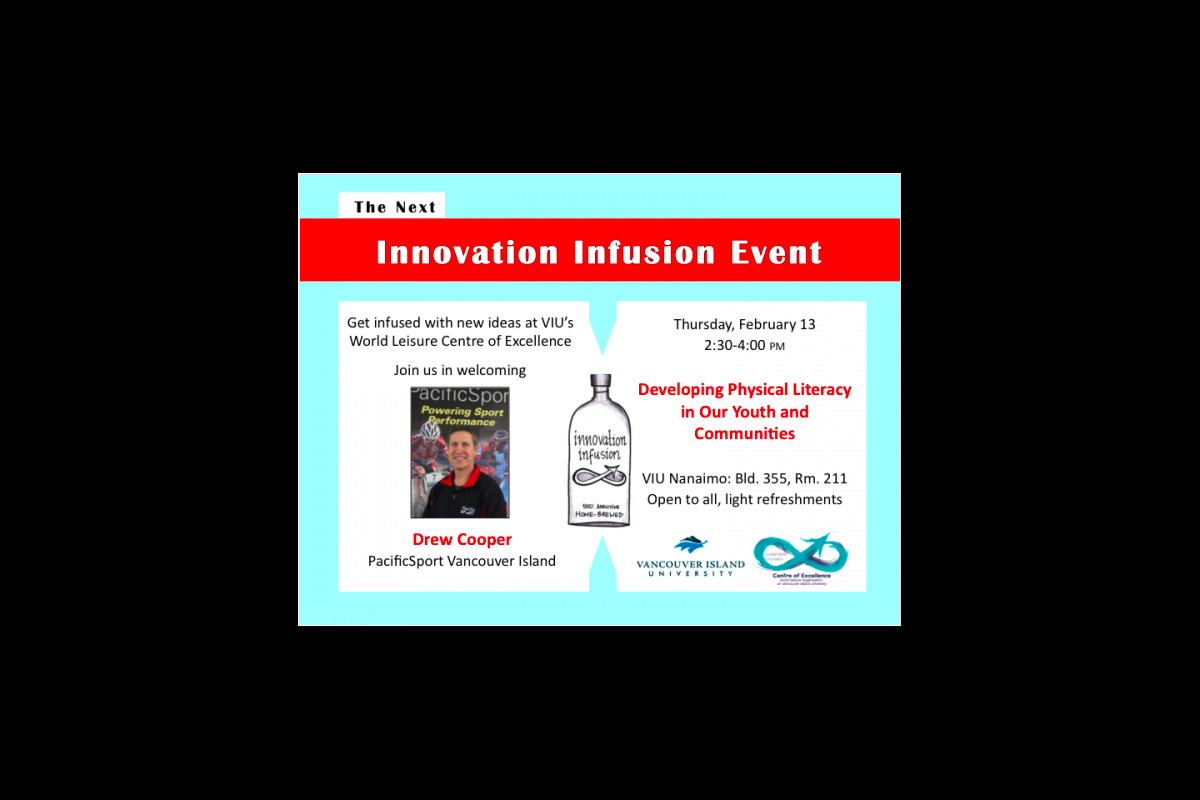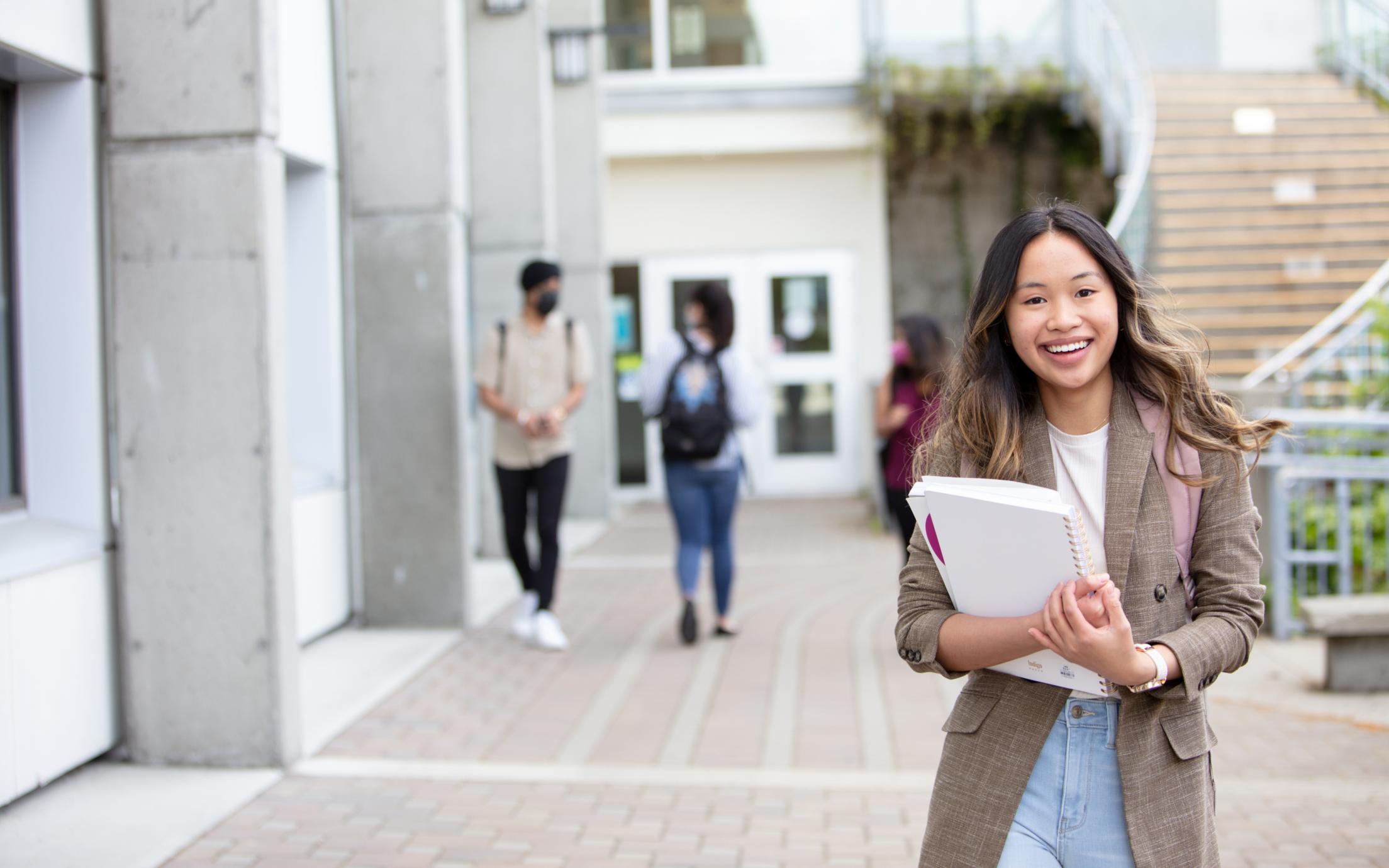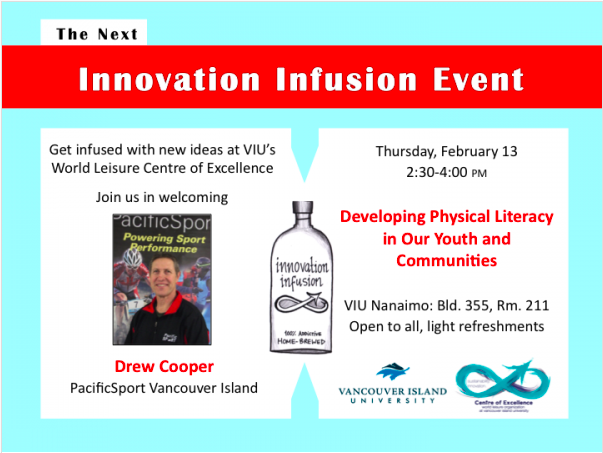
By Liane O’Keefe and Qingcheng Cao (Steve)
On February 13, 2014 the World Leisure Centre of excellence hosted its second Innovation Infusion event of 2014, featuring Drew Cooper of PacificSport Vancouver Island. The topic of Drew’s talk was ‘Developing physical literacy in our youth and communities’. Drew spoke passionately about the power of sport and physical activity and spent some time introducing PacificSport, and the programs and services that they have developed to support athletes. Interestingly, Drew highlighted the work of Canadian Sport for Life (who work to improve the quality of sport and physical activity in Canada), one of their partners, in reforming the traditional sport and recreation model in Canada to be more inclusive of all individuals. This new model recognizes three streams of physical activity and sport: recreationist/active for life individuals, sports participation, and high performance. Within all of this exists the idea of physical literacy, which is defined as “individuals who are physically literate move with competence and confidence in a wide variety of physical activities in multiple environments that benefit the healthy development of the whole person.” by PHE Canada; physical literacy is about fundamental movement skills.
This connected to some of the central principles and paradigms that we have been learning about sustainability and innovation, especially as it pertains to the interconnectedness of everything. Unhealthy children can lead to unhealthy adults, which can lead to less productive workers and even the loss of natural areas if these places are no longer being used (if physical activity is declining). Leisure is a great way to address some of these sustainability challenges; however, it should not be used as just a band-aid solution or token gesture to address the real issue. If children are becoming less physically active than it is important to understand the full picture, ask why and understand the source of this physical inactivity, rather than just telling people to go outside and get 60 minutes of physical activity a day. We can create a great program that is meant to get children outdoors, but if it does not address the root cause, it is unlikely to be successful in the long run. Thus, when it comes to physical activity, it is important to consider why children are not motivated to get outside and poor physical literacy may play a large part of this – so why has this happened and what do schools, parents, children need in order to address this issue? Trying to understand and address issues in this way is critical to working to create change towards sustainability.
There are several questions that the seminar left with us. Firstly, what can parents and teachers do to improve children’s physical literacy? Undoubtedly, parents and teachers have the most opportunities to connect and interact with children. Thus, ideally, they are most likely to influence children to participate in sport and be physically activity, not only in childhood, but also throughout their future life course. Secondly, how can practitioners promote the development of physical literacy within the context of existing physical education curricula? In other words, what can be done to make physical literacy and physical education compatible to help children develop a love of physical activity and foster a life-long habit of being active? Thirdly, what innovative ideas or actions can we take to revise existing whole education system to reduce children’s study pressures in school so that they have more free time to go outside? Lastly, do current dietary and technological habits in modern society contribute to our obesity and sedentary lifestyle? If the answer is yes, what strategies related to leisure sports can be used to make us have a healthier life?
Overall, this seminar is highly relevant to sustainable leisure management as it provides us a potential research direction to better understand the cores of sustainable leisure management. As an important type of leisure, physical activity should play a significant role in our modern life. However, as was mentioned above, we are becoming unhealthier largely in part to our increasingly sedentary lifestyle. In this way, physical literacy becomes more important not only because it helps children understand why physical activity is important, but also because it helps children foster a love of and desire to be physically active for life through skill development. Therefore, physical literacy can be an effective tool to encourage people of all ages to be active and have fun. There are also sustainability challenges that should be considered. A lack knowledge and healthy habits can result in obese and unhealthy individuals, which can further result in a shortage of labor forces, loss revenues, a strain on the health system and ineffective use of sport and recreation facilities; it is a vicious cycle of unsustainability. It is important to consider as sustainable leisure management practitioners how we can use theory, knowledge and practice to find the root issues of physical inactivity and address it in sustainable ways.


